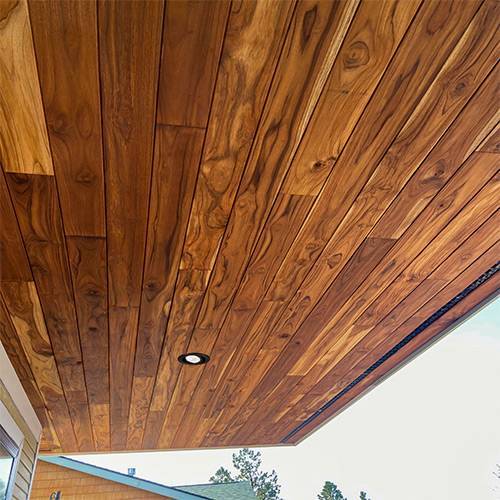Teak wood is a highly sought-after material known for its remarkable qualities and wide-ranging uses. This blog post delves into the world of teak, exploring its origins, characteristics, and the legal aspects surrounding its export, particularly from Burma.
Teak wood, scientifically known as Tectona grandis, is a tropical hardwood tree species belonging to the family Lamiaceae. It’s renowned for its durability, strength, and resistance to weather conditions, making it a preferred material for outdoor furniture, boat building, and other applications where resistance to the elements is crucial. Teak wood contains natural oils and rubber, which are responsible for its weather-resistant properties.
Where Does Teak Come From?
Teak is native to South and Southeast Asia, with significant growths in India, Thailand, Malaysia, and Indonesia. These regions provide the ideal humid, tropical climate that teak trees thrive in. Teak plantations have also been established in Africa and Central America, contributing to its global availability.
Characteristics of Teak
Teak wood is known for its:
- Durability: It’s remarkably resistant to rot, fungi, and mildew.
- Weather Resistance: The natural oils in teak make it ideal for outdoor use, as it can withstand various weather conditions.
- Aesthetic Appeal: Teak has a beautiful golden-brown color, with a straight grain and a smooth texture.
- Low Maintenance: Its natural oil content means it requires less maintenance compared to other softwoods.
Teak in Burma (Myanmar)
Burma, now known as Myanmar, is famous for having some of the world’s largest and highest-quality teak forests. Historically, Burmese teak was highly valued and widely used for high-end applications, including shipbuilding and luxury outdoor furniture.
The Legality of Exporting Teak from Burma (Myanmar)
The export of teak from Burma has been a complex issue, primarily due to concerns over illegal logging and deforestation. To address these issues, several regulations and sanctions have been put in place:
- Myanmar Timber Enterprise (MTE): This government body controls all teak exports from Myanmar. Purchases from MTE are considered legal under Myanmar law.
- International Sanctions: In the past, countries like the United States have imposed sanctions on Myanmar, affecting the import of Burmese teak. However, these sanctions have evolved over time, and it’s crucial to check the current legal framework.
- Certifications: Organizations like the Forest Stewardship Council (FSC) provide certifications to ensure the legality and sustainability of wood products, including teak.
Sourcing Burmese Teak from Myanmar
Importing teak from Myanmar into the United States is a complex and controversial issue, especially following the military coup in Myanmar in 2021. Since the coup, the U.S. and other nations have imposed economic sanctions targeting Myanmar’s lucrative timber industry due to its connections with the military regime. These sanctions effectively prohibit the international trade of Myanmar timber, including valuable teak, to these markets.
Despite these sanctions, research by various NGOs, including the Environmental Investigation Agency, has revealed that teak imports from Myanmar have continued to flow into the United States. U.S. firms have been found circumventing these sanctions by purchasing timber through private brokers and from intermediate countries like China. This ongoing trade, in turn, has been generating revenue for Myanmar’s military, which is accused of committing human rights atrocities.
Given this context, while it’s technically possible to import teak from Myanmar into the United States, doing so may involve circumventing sanctions and contributing to the funding of a regime accused of severe human rights violations. Moreover, the U.S. government is urged to enforce these sanctions more effectively and to investigate and prosecute those involved in the illegal teak trade. Therefore, while the trade in Myanmar teak continues in practice, it is fraught with legal, ethical, and human rights considerations.
Plantation Teak vs. Burmese Teak
Burmese Teak is becoming known as “Conflict Teak” due to old growth teak lumber being over harvested, corruption, human rights violations and the militarized takeover of what is no called Myanmar.
Teak from Myanmar “Burma” is now sanctioned by the United States government as well as other countries around the world.
Fortunately there is Plantation Teak that is sustainably grown in managed forests that is completely ethical and legal.
Advantage Plantation Teak is grown in sustainable managed plantations. We’ve hand selected the best plantations that grow teak in its optimal growing conditions.

Our plantations strive to recreate optimal growing conditions that mimic Southeast Asia. This allows forestry experts to produce plantation teak that does not use fertilizers or irrigation to try and make the trees grow faster.
In addition we only harvest from older growth 25 – 50 year trees so we produce lumber with tighter grain and less sapwood.
There’s a lot of misinformation spread throughout the lumber industry that plantation teak is not as dense as old growth Burmese Teak.
However the United States Forest Service USDA did a study on 10 tropical hardwood species.
One of those species was Teak and they found no significant relationship between the growth rate of plantation teak and its density or durability to withstand extreme weather conditions.
In fact, in some tests the plantation Teak actually performed better than the old growth Burmese Teak.

Conclusion
Teak wood, with its exceptional qualities, continues to be a highly valued resource in the global market. While its durability and aesthetic appeal make it a top choice for various applications, the legal and environmental considerations, especially concerning Burmese teak, highlight the need for plantation teak that is sustainably grown and harvested and adheres to international regulations. Whether you’re a consumer, a woodworker, or an environmental enthusiast, understanding the intricacies of teak wood and its market is essential in making informed decisions.
